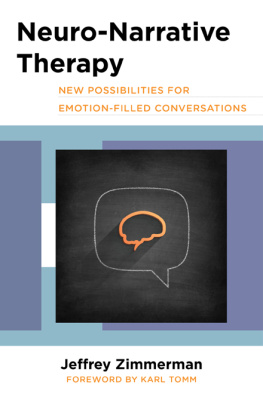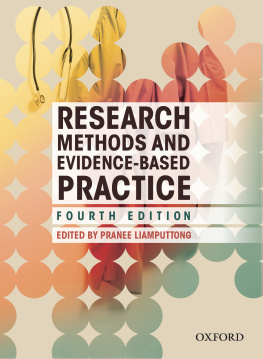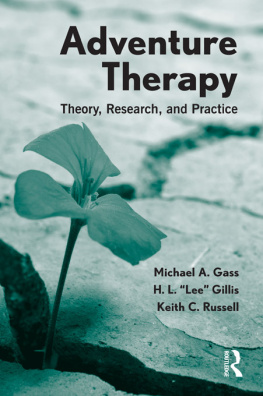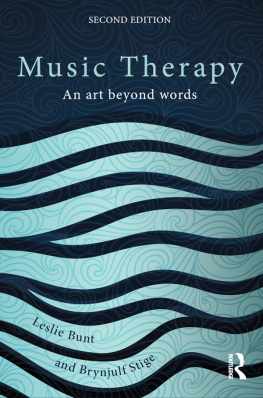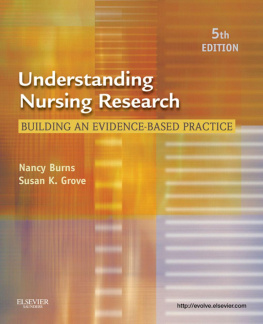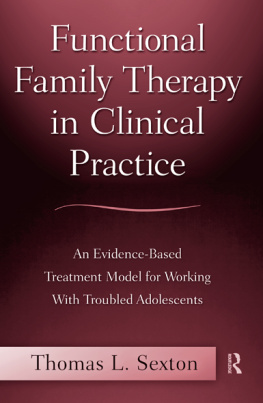INNOVATIONS IN
Narrative Therapy
A NORTON PROFESSIONAL BOOK
INNOVATIONS IN
Narrative Therapy
Connecting Practice, Training, and Research
Jim Duvall & Laura Bres
Foreword by David Par

W. W. Norton & Company
New York London
Copyright 2011 by Jim Duvall and Laura Bres
All rights reserved
Printed in the United States of America
First Edition
For information about permission to reproduce selections from this book, write to Permissions, W. W. Norton & Company, Inc., 500 Fifth Avenue, New York, NY 10110
For information about special discounts for bulk purchases, please contact W. W. Norton Special Sales at specialsales@wwnorton.com or 800-233-4830
Manufacturing by R.R. Donnelley, Bloomsburg
Production manager: Leeann Graham
Library of Congress Cataloging-in-Publication Data
Duvall, Jim.
Innovations in narrative therapy : connecting practice, training, and research / Jim Duvall, Laura Bres ; foreword by David Par. 1st ed.
p. ; cm.
A Norton Professional Book.
Includes bibliographical references and index.
ISBN 978-0-393-70616-1 (hardcover)
1. Narrative therapy. 2. Psychotherapy. I. Bres, Laura. II. Title.
[DNLM: 1. Narration. 2. Psychotherapymethods. WM 420]
RC489.S74D88 2011
616.89165dc22 2010029692
ISBN: 978-0-393-70616-1
W. W. Norton & Company, Inc., 500 Fifth Avenue, New York, N.Y. 10110
www.wwnorton.com
W. W. Norton & Company Ltd., Castle House, 75/76 Wells Street, London W1T 3QT
1 2 3 4 5 6 7 8 9 0
We dedicate this book to Michael White.
He taught us and inspired us as a mentor
and encouraged us as a friend.
This book would not have been written
without him. He is missed.
Contents
Acknowledgments
We originally met through the research project from which this book evolved. While we were excited about embarking on a unique project researching narrative practices, it was a daunting undertaking as we were entering uncharted territories. In doing so, we were breaking away from mainstream approaches to research in order to inquire into the therapeutic process, as well as therapeutic outcomes. We needed a significant amount of help and support to meet this challenge. At that point we could hardly imagine our work ever being published as a book.
The ideas expressed in this book echo the voices and reflect the influences of many people who traveled with us on this journey. We particularly wish to thank Karen Young for joining us on this adventure. She graciously agreed to write about her narrative practices in a walk-in clinic for Chapter 5 of this book. It has been a pleasure to reflect on our practices and new ideas with her and we look forward to further research, teaching, and writing projects together in the future.
We would like to acknowledge everyones influence and offer our genuine thanks for their support, conversations, and contributions, which made it possible to conduct our research and produce this book. Unfortunately, the space available to us will not allow us to include the names of everyone who so generously offered their help and support. We are deeply indebted to every person who has contributed to this project.
First we would like to acknowledge and thank Michael White. He gave generously of his time and knowledge to us. His guidance, mentorship, and leadership provided a primary source of ideas that were foundational to many of the concepts expressed in this book. Michael was encouraging of our original proposal for this book. He read it and then offered us clear feedback about the importance of staying true to our original vision, values, and what we thought was important to write about. He also valued our commitment to critical thinking. He was a superb role model regarding how to center the knowledge of those people consulting therapists. We were inspired by his political and ethical stance and were truly blessed by his friendship over many years.
We would also like to thank David Epston. Even while managing his own grief following Michaels death, David stepped up without hesitation to fill the void and took on much of Michaels previous role with us, offering encouragement for continuing our research and writing this book. He continues to offer us rich consultation to this day. David always has a stockpile of brilliant references and resources to recommend. We particularly want to thank him for pointing us in the direction of Morsons work on Bakhtin. His passion and enthusiasm have been infectious and inspiring, helping us stretch our thinking and move away from taken-for-granted assumptions, to new and less-charted territories, continuing to embrace and develop new ideas.
We are grateful to Jill Freedman, who was always at the end of a telephone if we needed to touch base with her regarding her experience of writing a book, whether it was how to write as coauthors or the process of publishing in general. We have appreciated her patience, generosity, and unfailing interest. Whenever we met at conferences she always asked how the book was coming along and continued to urge us forward.
We would like to thank David Par for agreeing to read the manuscript and write the Foreword. Davids willingness to help unpack, clarify, and question ideas was always welcome. It has been wonderful to have long conversations with David as he is also committed to reflecting upon and researching narrative practices. At one point we spent an entire weekend at his cottage in the Laurentian mountains of Quebec, exchanging ideas around the fireplace, while the snow piled up outside. Davids friendship has been a source of constant encouragement, as he also frequently asked about how the book was progressing.
I (LB) particularly thank my husband, David, and son, Liam. They were the ones most affected by this project as I would disappear for days at a time to write with Jim. They supported me by picking up the slack around the home and by showing genuine interest in discussing the ideas and the process of writing over late dinners when I would finally appear from behind the computer. I am grateful to Liam for allowing me to include a short anecdote from his childhood in Chapter 3. I am grateful to David for his enthusiasm for this project and willingness to read drafts of chapters, engage in thought-provoking analysis, and provide such thorough feedback. Jim and I could not have managed without Davids faith, and without Carolines faith, in our ability to write a worthwhile book.
I (JD) would like to thank my life partner and best friend Caroline for her understanding and unfaltering belief in this project. Not only did she also take up the slack in my day-to-day life, she was always ready to listen and offer a reality test for our half-baked ideas. Always patient, she frequently helped me bridge yet another technological failure as I would stare in disbelief at my computer. Caroline and our dog, Banjo, constantly reminded me that, oh yeah, there is more to life than this book project.
We would also like to thank the many staff, volunteers, students, and consultants of the Hincks-Dellcrest Centre, Gail Appel Institute who participated in, believed in, and supported the training and research project. They dedicated endless hours of work and study, through many therapeutic sessions, watching countless hours of videotapes, tracking forms and data, and reflecting on the complexities of the work.
We would like to thank the Master of Social Work students who participated in Lauras graduate elective course in narrative theory and practice and then became part of an ongoing consultation group. They expressed interest in our project and read early drafts of chapters and provided feedback, reassuring us that this was a worthwhile endeavor that would be useful for students. Thanks particularly to Diane, who read these chapters with such care and provided skilled copyediting suggestions. Thanks also to a work-study student, Carolyn, who provided another set of eyes for catching those small spelling and grammar errors and missing references that can otherwise get away from you.


